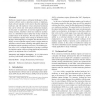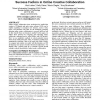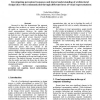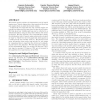525 search results - page 2 / 105 » Mutual Information Analysis: How, When and Why |
EUROSYS
2011
ACM
12 years 9 months ago
2011
ACM
Multicore computers pose a substantial challenge to infrastructure software such as operating systems or databases. Such software typically evolves slower than the underlying hard...
GROUP
2010
ACM
13 years 3 months ago
2010
ACM
Online creative collaboration (peer production) has enabled the creation of Wikipedia and open source software (OSS), and is rapidly expanding to encompass new domains, such as vi...
IV
2007
IEEE
14 years 1 days ago
2007
IEEE
Research to date has demonstrated the apparent differences how architects, as ‘experts’ and members of the public as ‘non-experts’ perceive and understand visual represent...
WSDM
2009
ACM
14 years 17 days ago
2009
ACM
Web search queries capture the information need of search engine users. Search engines store these queries in their logs and analyze them to guide their search results. In this wo...
SIGMOD
2009
ACM
14 years 6 months ago
2009
ACM
Many websites provide form-like interfaces which allow users to execute search queries on the underlying hidden databases. In this paper, we explain the importance of protecting s...




